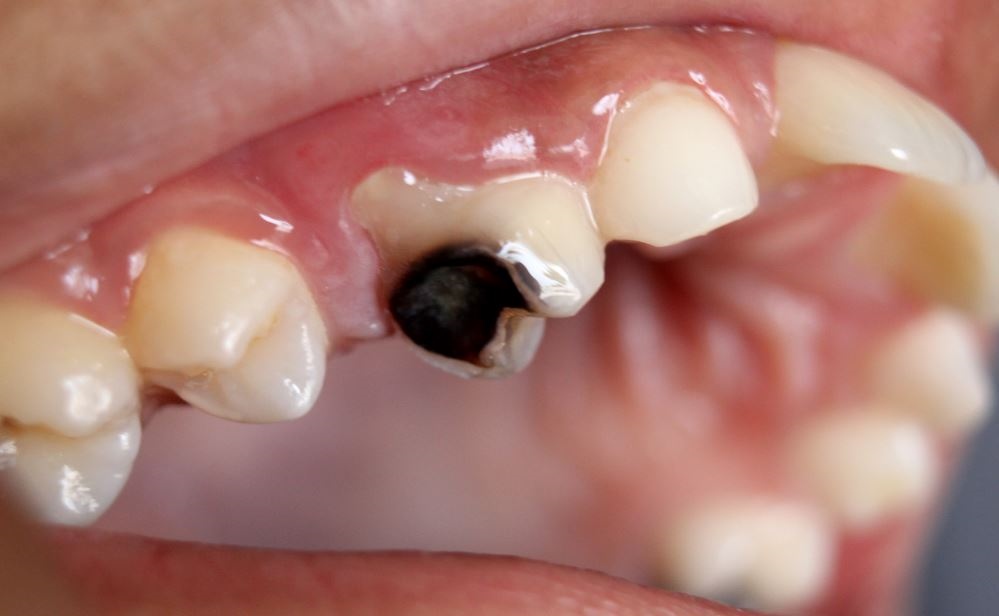Cavities on the Sides of Your Teeth
 Plaque buildup can occur anywhere on your teeth, and the sides of your teeth are certainly no exception. Cavities on the side of a tooth can occur either on the outward or inward-facing side. The technical terms for these sides of the teeth are the buccal and facial surface (the side facing out towards the cheek and lips, respectively) and the lingual surface (the side facing in towards the tongue). Cavities in either location are called “smooth-surface cavities”, because they occur on the smooth, flat sides of your teeth. Although these are less common than cavities on the chewing surfaces of your teeth (called “pit and fissure cavities”), they are equally important to guard against, to ensure good dental health.
Plaque buildup can occur anywhere on your teeth, and the sides of your teeth are certainly no exception. Cavities on the side of a tooth can occur either on the outward or inward-facing side. The technical terms for these sides of the teeth are the buccal and facial surface (the side facing out towards the cheek and lips, respectively) and the lingual surface (the side facing in towards the tongue). Cavities in either location are called “smooth-surface cavities”, because they occur on the smooth, flat sides of your teeth. Although these are less common than cavities on the chewing surfaces of your teeth (called “pit and fissure cavities”), they are equally important to guard against, to ensure good dental health.
What are the best ways to prevent cavities on the sides of your teeth?
A proactive approach is always best! As with all parts of your teeth, adequate brushing and flossing is essential to prevent plaque buildup, and therefore cavities, on the sides of your teeth. The official recommendation of the American Dental Association (ADA) is that you should be brushing your teeth with fluoride toothpaste twice per day, and for a full two minutes each time, as well as flossing once per day.
The ADA also highlights the importance of using a soft-bristled toothbrush in order to avoid damaging the gums and tooth enamel, and advises that toothbrushes should be replaced every three to four months, or earlier if the bristles are becoming worn. Dental experts advise waiting at least 30 to 60 minutes after eating before brushing your teeth, in order to give your saliva time to wash away food particles and counteract the high levels of acid that are often present in your mouth after eating, before toothpaste is applied. This helps protect the tooth enamel.

Rotten cavity on side of tooth
When brushing, it is very important to cover all teeth surfaces fully. In particular then for the sides of teeth, you’ll want to ensure that your brushing is spanning the full length of the tooth on both the inward and outward-facing sides, and extending all the way to the gum line, with the toothbrush positioned at a 45 degree angle to the gums.
A main reason why smooth-surface cavities on the side of a tooth aren’t so common is because there is less opportunity for food particles to get stuck on this smooth, vertical part of a tooth. Nevertheless, plaque can still build up there. For instance, drinking sweet beverages can increase the chances of cavities in these locations. When smooth-surface cavities do occur, it is typically because of not brushing properly or not brushing enough. Following the tips discussed above, along with having regular dental check-ups, will help avoid such problems!
Cavity on side of tooth: treatment & prognosis
Enamel on the sides of teeth tends to be thicker, and therefore smooth-surface cavities tend to be slow to develop. Because of this, they are also usually easier to treat when they do occur. In fact, if detected early, it is quite possible that they may be successfully addressed through fluoride treatment alone. This can include the application of fluoride to repair enamel at the dentist’s office, as well as simply improving your own dental hygiene, for instance by ensuring that you are using fluoride-containing toothpaste, which is the optimal type regardless of whether a cavity is developing or not. Fluoride helps to reverse the demineralization process that occurs when enamel is starting to break down.
However, if the cavity is further along, then fluoride treatment alone may not be enough to correct the problem. In this case, your dentist may do a filling, where decayed tooth matter is removed and replaced with other material to restore the tooth to its original shape. As with other kinds of cavities, there are different types of material that can be used to create these fillings. Among the most common are the use of amalgam (a mixture of metals like silver, tin, copper, and mercury), and the use of tooth-colored composites (made from a mixture of plastic resins and glass).
For fillings on outward-facing sides of teeth at the front of the mouth, composite is generally the material of choice for aesthetic reasons, whereas amalgam is much more commonly used for fillings that will not be visible to others, such as on teeth at the back of the mouth (although composite can be used there as well). Amalgam fillings do have the advantage of lasting longer than composite fillings without failing, and often being more economical. However, there may be various factors to take into account in deciding which type of filling is best in a particular situation, so this is worth discussing with your dentist if you have any questions or concerns, or want to discuss the pros and cons of different fillings materials a cavity on the side of a tooth.
